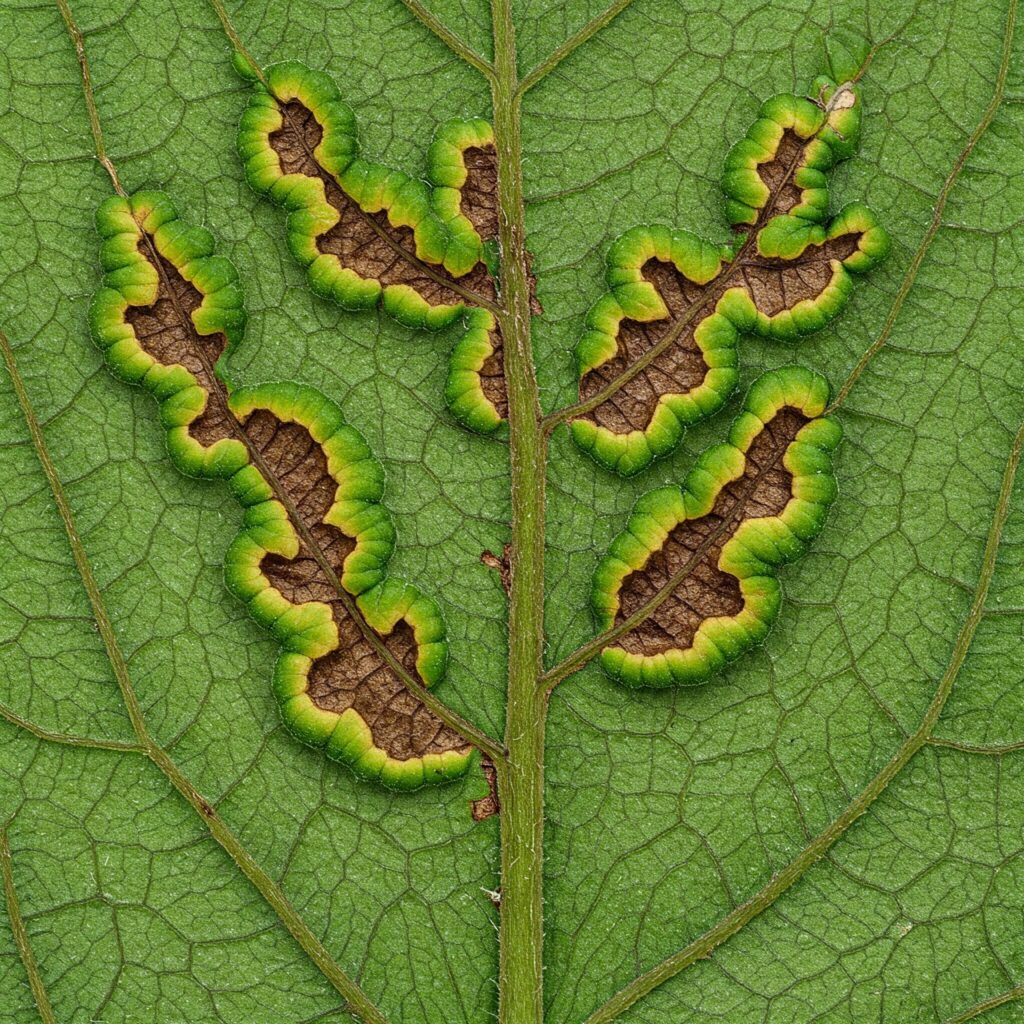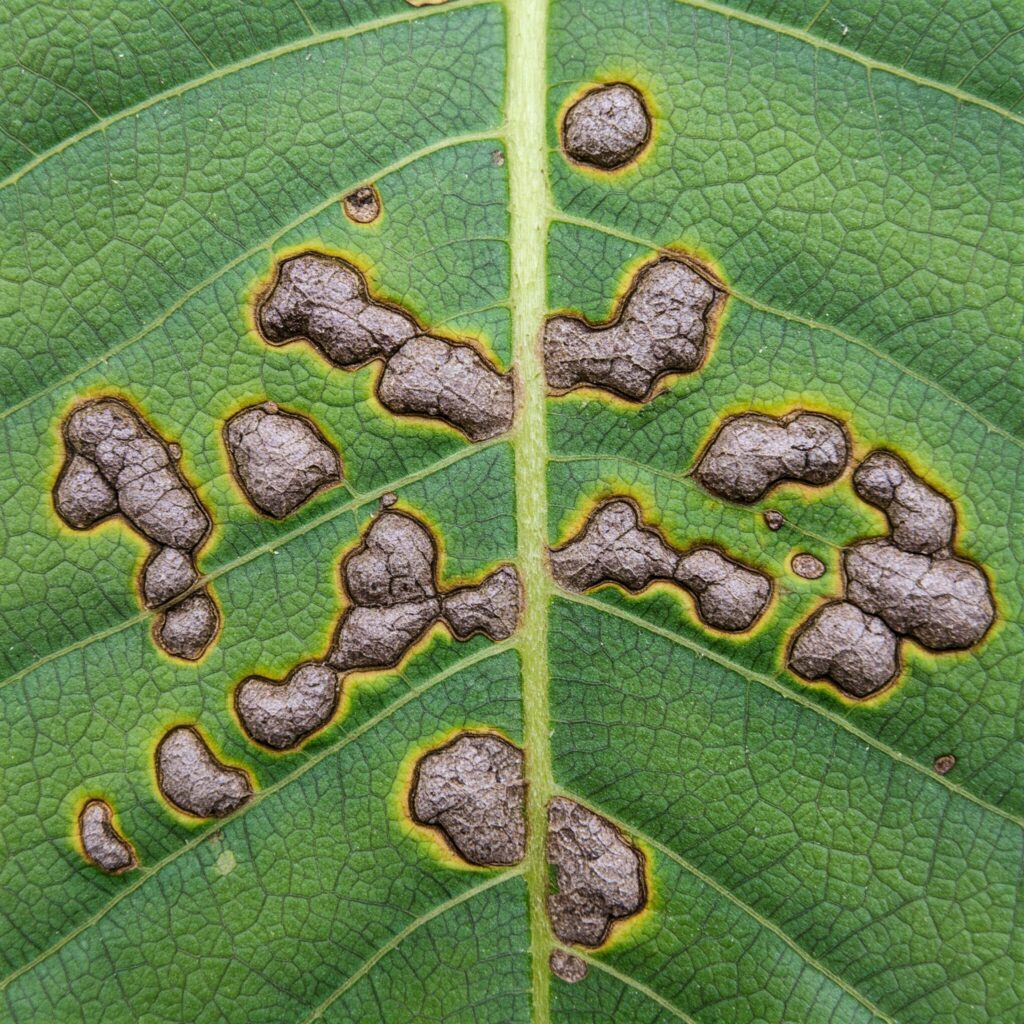Early blight (Alternaria solani) and late blight (Phytophthora infestans) represent two of the most feared fungal diseases by farmers cultivating tomatoes (Solanum lycopersicum) and potatoes (Solanum tuberosum). Although caused by distinct pathogens, both diseases share the ability to spread rapidly under favorable environmental conditions and cause severe defoliation, drastic yield reduction, and, in extreme cases, total crop loss. Understanding the differences between these diseases, recognizing their symptoms, and applying integrated management strategies is fundamental to protecting these essential crops in Latin American agriculture and globally.
Unraveling the Enemies: Early Blight vs. Late Blight
Early Blight: The Opportunistic Attacker in Warm Climates
Early blight, caused by the fungus Alternaria solani, is a disease that typically appears in the earlier stages of plant development, especially after the onset of flowering and during periods of warm and humid weather. The fungus can survive in infected crop debris in the soil or on contaminated seeds.
Symptoms of Early Blight:
- Leaves: Characterized by the appearance of dark, circular or irregular spots, which often display concentric rings (similar to a target). These spots can grow to several centimeters in diameter and are usually surrounded by a yellowish halo. Severely affected leaves may turn yellow, wither, and drop.
- Stems: Dark, sunken lesions can also develop on the stems, which can weaken the plant and affect the transport of water and nutrients.
- Fruits/Tubers: In tomatoes, early blight can cause dark, leathery spots at the stem end of the fruit. In potatoes, lesions on tubers are generally firm, slightly sunken, and dark brown, with a dry, corky tissue underneath.

Late Blight: The Rapid and Destructive Threat in Cool and Humid Conditions
Late blight, caused by the oomycete Phytophthora infestans, is infamously known for its role in the Irish Potato Famine of the 19th century. This disease can develop and spread extremely quickly under conditions of cool (15-20°C) and high relative humidity, especially during periods of prolonged rain or fog. The pathogen produces mobile spores (zoospores) that can be easily dispersed by wind and water, leading to devastating epidemics in a short time.
Symptoms of Late Blight:
- Leaves: Initially, irregular pale green to brown spots appear, which rapidly expand and become dark brown or black, with a water-soaked or oily appearance. Under conditions of high humidity, a white, cottony mold growth can be observed on the underside of the leaves, especially at the margins of the spots. Severely affected leaves wither, curl, and die, emitting a characteristic foul odor.
- Stems: Dark, elongated lesions can also develop on the stems, often accompanied by the same white, moldy growth. Stem infections can girdle the plant and lead to its collapse.
- Fruits/Tubers: In tomatoes, late blight causes large, irregular dark brown to black blotches on the fruits, which can spread rapidly and lead to rot. In potatoes, late blight can infect tubers, causing irregular, slightly sunken brown to purplish lesions that extend into the tuber as a dry, granular reddish-brown rot.

Comprehensive Prevention Strategies: The First Line of Defense
Prevention is the most effective strategy to minimize the impact of early and late blight. Implementing the following cultural practices can significantly reduce the risk of infection and the severity of the disease:
- Crop Rotation: Avoid planting tomatoes or potatoes in the same field year after year. Rotate with non-solanaceous crops (such as legumes, cereals, or cucurbits) for at least 2-3 years to help reduce the buildup of pathogens in the soil.
- Selection of Resistant or Tolerant Varieties: Choose tomato and potato varieties that show resistance or tolerance to early and late blight, if available in your region. While complete resistance is rare, tolerant varieties may suffer less damage.
- Use of Healthy Seeds and Seedlings: Use certified pathogen-free seeds and vigorous, healthy seedlings from reliable nurseries.
- Proper Spacing Between Plants: Ensure adequate spacing between plants when sowing or transplanting to promote good air circulation and allow leaves to dry quickly.
- Hilling in Potatoes: Hilling potato plants (covering the base of the stems with soil) helps protect tubers from late blight spores that may wash off foliage into the soil.
- Mulching: Applying a layer of organic mulch around the base of plants can help prevent soilborne spores from splashing onto the leaves during rain or watering.
- Proper Watering: Avoid overhead watering, especially late in the day. It is preferable to water directly at the soil level (drip irrigation or soaker hoses) to keep foliage as dry as possible. Water early in the day to allow any wet leaves to dry quickly in the sun.
- Balanced Fertilization: Maintain vigorous plant growth with balanced nutrition according to crop needs and soil tests. Healthy plants are better able to tolerate diseases. Avoid excessive nitrogen fertilization, which can promote dense, more disease-susceptible foliage growth.
- Crop Sanitation: Remove and destroy infected leaves, stems, or fruits as soon as symptoms are detected. Do not compost diseased plant material. At the end of the season, remove and destroy all tomato and potato crop debris from the field or garden.
Active Treatment and Control Strategies: Intervening to Save the Harvest
If early or late blight appears in your crops, it is crucial to act quickly to control the spread of the disease:
- Accurate Identification: It is essential to distinguish between early and late blight, as control strategies may vary slightly. Carefully observe the symptoms on leaves, stems, and fruits/tubers.
- Pruning and Removal of Infected Tissue: Remove and destroy leaves, stems, or fruits/tubers that show symptoms of the disease. Be sure to clean pruning tools between each cut to prevent the spread of the pathogen.
- Application of Fungicides: The use of fungicides is often necessary to control early and late blight, especially under environmental conditions favorable for the disease.
- Early Blight: Contact fungicides (such as chlorothalonil, mancozeb) and systemic fungicides (such as azoxystrobin, difenoconazole, myclobutanil) can be used. Preventative applications, starting before symptoms appear or at the onset of the disease, are usually more effective.
- Late Blight: Requires the use of specific fungicides that are effective against oomycetes. Some examples include metalaxyl, cymoxanil, fluazinam, and propamocarb. Due to the rapid development of late blight, preventative applications and early applications after the detection of the first symptoms are crucial. It is important to alternate fungicides with different modes of action to prevent the development of pathogen resistance.
Always follow the manufacturer’s label instructions regarding dosage, application frequency, and safety precautions.
- Constant Monitoring: Regularly inspect crops for the first signs of the disease, especially during periods of warm and humid weather (for early blight) or cool and humid weather (for late blight).
- Biological Control: Research on the biological control of early and late blight is ongoing. Some beneficial microorganisms may show potential for suppressing the growth of the pathogens, but their effectiveness under field conditions can vary.
Conclusion: A Vigilant Approach to Protecting Tomato and Potato Crops
Early and late blight pose significant threats to tomato and potato production, with the potential to cause substantial economic losses. However, through the implementation of comprehensive prevention strategies that focus on proper cultural practices and the selection of resistant varieties, coupled with constant monitoring and the timely application of treatments when necessary, farmers can minimize the impact of these diseases and ensure healthy and abundant harvests. Understanding the differences between early and late blight, as well as the conditions that favor their development, is key to effective management and to protecting these essential crops for human consumption.
Long-Tail Keywords: How to differentiate early and late blight in tomatoes and potatoes, organic treatment for early and late blight, systemic fungicides for blight in tomatoes and potatoes, fungal disease prevention strategies in solanaceous crops, integrated management of early and late blight in agriculture, tomato and potato varieties resistant to blight, best watering practices to prevent blight, the role of crop rotation in blight control, how to identify early symptoms of blight in crops.
 AgronoBlog – Agriculture Blog
AgronoBlog – Agriculture Blog